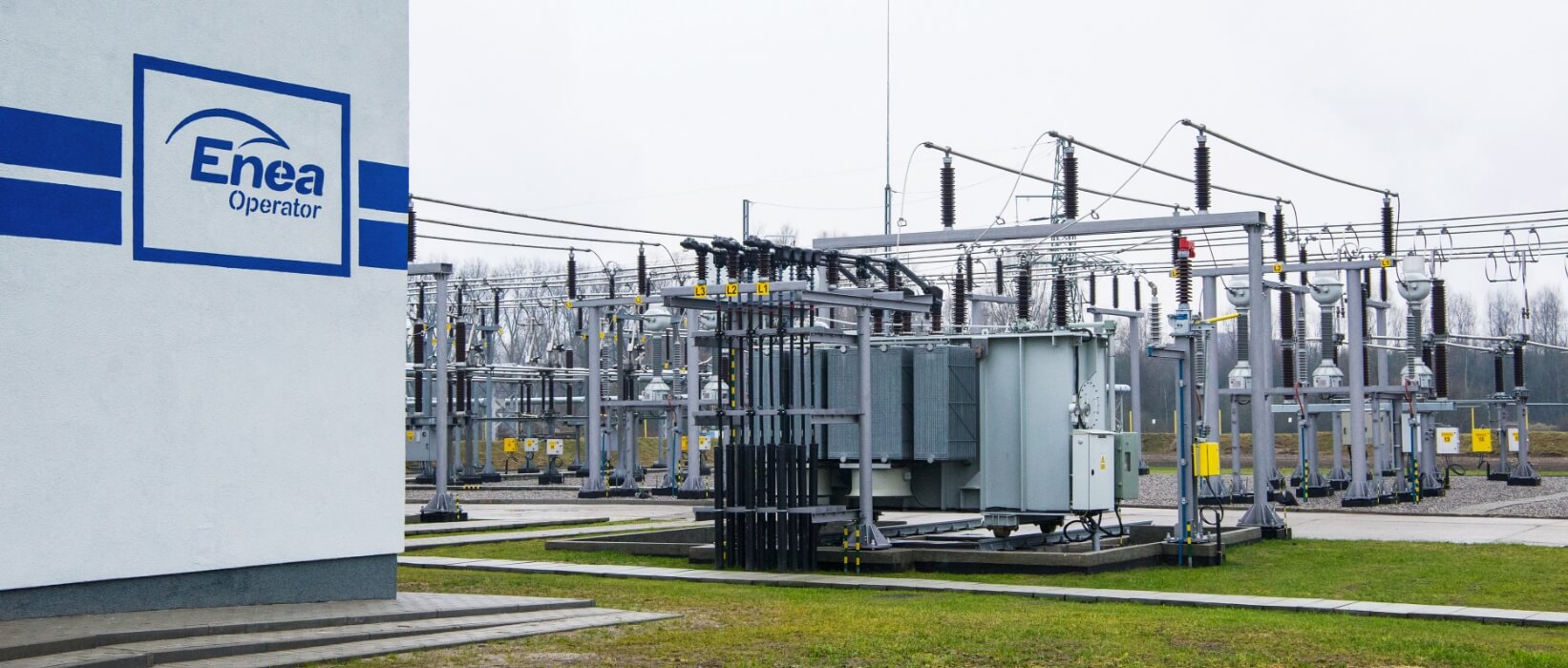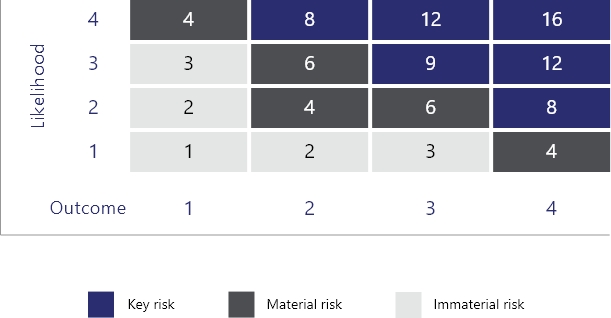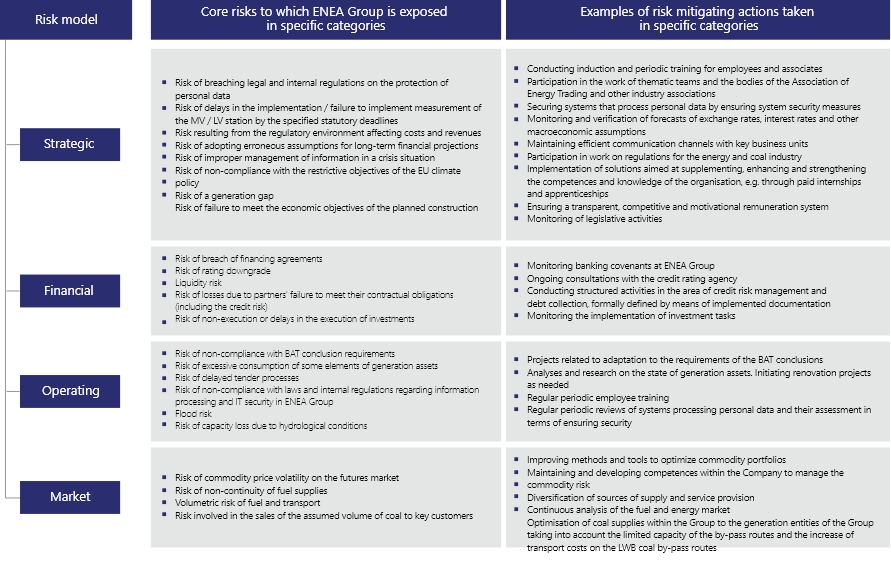For the Risk Management and Compliance Area:
1. Giving recommendations to the Management Board of ENEA S.A. on approving the policies governing the process of managing risks, business continuity, insurances,
and compliance with approval of any relevant updates.
2. Accepting and analysing information received from Content Management Units in the area of managing risks, business continuity, and insurances.
3. Providing opinion on annual reports on the Compliance Policy implementation which are submitted to ENEA Management Board for approval.
4. Accepting semi-annual reports on the Compliance Policy ongoing implementation and preparing recommendations as to the Compliance Policy implementation.
5. Issuing of binding interpretation (construction) of the Compliance Policy provisions.
6. Approving the operating documentation governing the process of managing risks, insurances, and business continuity with approval of any relevant updates (strategies, procedures, methodologies, tools, instructions, guidelines, etc.).
7. Making decisions on the issues which include, without limitation:
i. Issues resulting from the documentation governing the area of managing risks, business continuity, and insurances
ii. Giving a consent to the deviations from the rules set out in the documentation governing the areas listed in the item above;
iii. Giving a consent for ENEA Group Companies to sign contracts based on foreign law or on the settlement currency other than the Polish, except for:
iv. framework agreements based on the EFET standard and related surety agreements, if they fulfil the following cumulative conditions: they will be based on German law, the binding language will be English, disputes will be settled before an arbitration court, the euro or the Polish zloty will be the currency of trade;
v. framework agreements based on the SCoTA standard and related surety agreements if they fulfil all of the following conditions: they are based on German or English law, the binding language shall be English, disputes shall be settled before an arbitration court, the currency of trade shall be the euro or the US dollar or the Polish zloty;
vi. biomass purchase contracts and related suretyship, guarantee or letter of credit contracts, if they fulfil all of the following conditions: they are based on German, English or Polish law, the binding language is English or Polish, the currency of trade is the euro, US dollar or Polish zloty;
vii. other agreements for an amount not exceeding the equivalent of EUR 10,000, provided that the sum of such agreements concluded by the Company in a calendar year without obtaining the consent of the Risk Committee may not exceed the equivalent of EUR 50,000; after exceeding the limit of the equivalent of EUR 50,000, the conclusion of each subsequent agreement meeting the criteria of foreign law and a settlement currency other than Polish zloty requires the consent of the Risk Committee;
For the Market Regulation Area:
1. Issuing guidelines concerning the presentation of the position and undertaking negotiation, regulatory, and lobbying activities in favour of ENEA Group companies in the scope of market regulations.
2. Setting the direction and scope of the analysis of the impact of market regulations on development and investment plans and strategy of ENEA Group.
3. Receiving and analysing information from the Market Regulation Area received from the Substantive Entities.
Merytorycznych.






